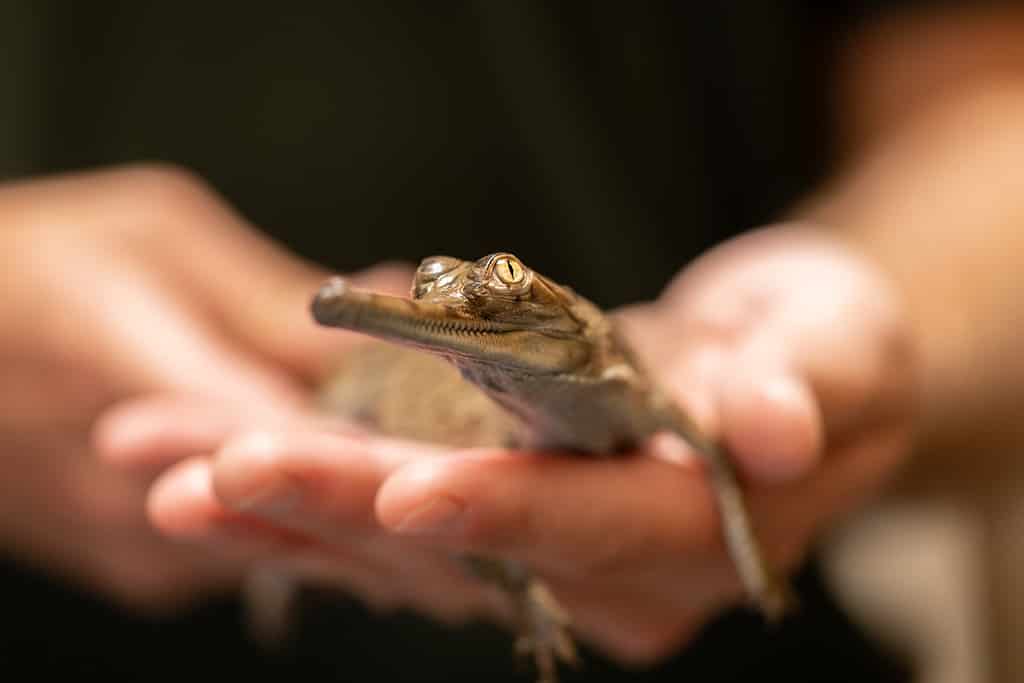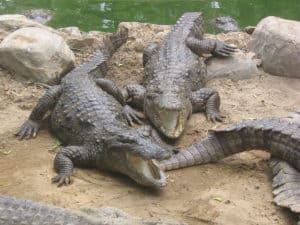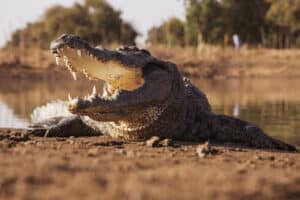In a tremendous win for the Fort Worth Zoo’s conservation program, four baby gharials hatched last month. Gharials are an Asian crocodile species native to the Indian subcontinent, and critically endangered. Experts say that there may only be 200-500 individuals left in the wild, making conservation programs vital to their survival.
The Fort Worth Zoo is one of nine U.S. zoos and collections that house 35 gharials. However, none of the breeding programs have been very successful. The last hatchling from anywhere in the U.S. was in 2016 at the St. Augustine Alligator Farm Zoological Park in St. Augustine, Florida. So, the four new crocodilian Texas residents are a welcome arrival.

This gharial hatchling can live 50-60 years.
©Fort Worth Zoo Press Photo – License
In a statement, Michael Fouraker, Fort Worth Zoo Executive Director said, “With this scientific breakthrough, we will be able to contribute our research and expertise to other zoos and institutions across the world in an effort to bolster the population of this critically endangered species.”
The four hatchlings came from 82 eggs in clutches laid by two females. Fertility rates among captive gharials have long been a frustration for conservation programs. So even though only four precious gharials hatched, they are a triumph — adding to the captive gharials’ genetic diversity. They’re also a chance for the future of these rare Asian crocodiles.
Unfortunately for excited zoo visitors, they aren’t on display yet. For now, the keepers are caring for them behind the scenes while they grow bigger and stronger.
What Is a Gharial?
Although they’re a little funny-looking, gharials are an Asian crocodile species. They can reach 20 feet long and weigh over 2,000 pounds. Yet they don’t typically attack people. Gharials do not have the same reputation for attacks as Nile crocodiles. Their long extremely thin snouts are specifically designed for only one type of prey: fish.
Male gharials grow a large hollow protuberance at the end of their snout, which is said to look like an earthenware vessel called a ghara.
This fish-eating crocodile lives in the northern Indian subcontinent. However, their range once spread as far as the Irrawaddy River in Myanmar. But years of over-fishing, pollution, sand mining, and dam-building have fragmented their breeding populations and separated them from preferred nesting sites.
In the wild, you’ll often see male gharials carrying babies around for protection. This crocodile species has an interesting social structure, where the males take on baby protection duty. One male may mate with several females, and he’ll protect all of the babies.

An adult male gharial crocodile at the Fort Worth Zoo.
©Fort Worth Zoo Press Photo – License
The photo featured at the top of this post is © Fort Worth Zoo Press Photo – License / Original
Thank you for reading! Have some feedback for us? Contact the AZ Animals editorial team.







